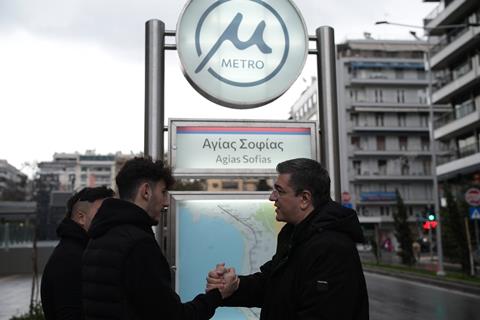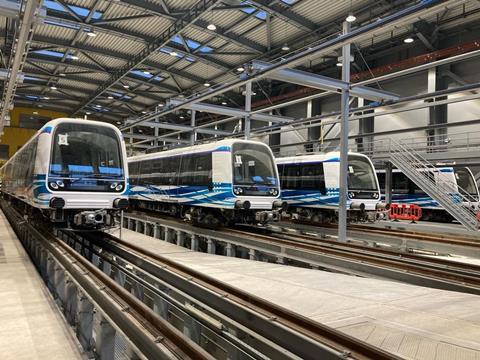
GREECE: The Thessaloniki metro opened on November 30, 18 years after construction began.
The first phase runs 9·6 km through twin bore tunnels from Thessaloniki New Railway Station to Nea Elvetia with 13 stations and an end-to-end journey time of 18 min.
The line has a capacity of 254 000 passengers/day, which will increase to 350 000 in the future. The line is predicted to remove 56 000 cars trips per day and save 77 000 tonnes of CO2 per year.
Guests at the opening ceremony included Greek President Katerina Sakellaropoulou, Prime Minister Kyriakos Mitsotakis and Apostolos Tzitzikostas, the newly appointed European Commissioner for Transport & Tourism. Travel is free until December 3.
Operations

The metro is operated by THEMA, a 51:49 consortium of Milano transport operator ATM and Egis under 11-year contract worth €250m which was signed with project promoter Hellenic Metro in October 2023.
ATM now operates seven driverless metro lines in Milano, København and Thessaloniki. ‘The opening of the Thessaloniki metro represents a further step in the ATM Group’s growth strategy and confirms the central role of public transport in the development of cities’, said ATM Chair Gioia Ghezzi ‘Encouraging social, economic and cultural exchanges, it allows everyone to travel in a shared and sustainable way.’
Renaud Beziade, CEO for Consulting & Operations at Egis, said the company had long had a presence in the Greek road sector, and is ‘delighted to be also involved in public transport and low-carbon mobility’.
The trainsets and CBTC were supplied by Hitachi Rail. There is an initial fleet of 18 four-car trainsets running approximately every 3 min. Each set is 51 m long with a capacity of 96 seated and 370 standing passengers. Operation is fully automatic, but there are onboard attendants. All stations have platform screen doors.
Long process

After a failed attempt at developing a metro in the 1990s, the construction contract was signed with a consortium of AEGEK, Impregilo, Ansaldo TSF and AnsaldoBreda on April 7 2006.
Construction started at the end of June 2006 with a view to opening in October 2012. The delays were primarily blamed on the large number of archaeological discoveries.
Webuild said there were ‘significant engineering complexities’ working in densely populated and congested area with many archaeological treasures which had to be recovered and preserved.

The tunnel bores are at an average depth of 20 m, and some stations were redesigned to allow artefacts to remain in their original location; Demokratias station was shifted 10 m to preserve a Byzantine wall. The archaeological excavations covered 30 000 m2, and included the discovery of numerous marble slabs from a Roman road.
The Venizelos station is claimed to be have the world’s largest museum within a metro station, with antiquities, including infrastructure and buildings dating from the third to sixth centuries as well as coins, pottery, glass, iron, bronze, marble and even bones.

The metro’s logo ‘is a reflection of both the historical depth of the city of Thessaloniki and the innovative nature of the project’, Minister of Infrastructure & Transport Christos Staikouras said when the branding was unveiled in mid-November. ‘The small letter μ was an obvious choice, since it directly refers to the metro and is at the same time different to the capital M, which is widely used with several variants worldwide. Thus, the Byzantine small letter μ was simplified to combine authenticity and innovation, the two characteristics we wish the new identity of the Thessaloniki metro to convey’
The project has cost an estimated €3·5bn, funded through a combination of European Investment Bank loans, European Regional Development Fund support and national sources.
Next steps

A 4·8 km branch from 25 Martiou to Kalamaria and Micra with five stations is expected to be completed by the end of 2025, with a further 15 trains to be added to the fleet and headways cut to 90 sec.
In the longer term the branch is to be extended to the airport, taking the network to 20 km.



